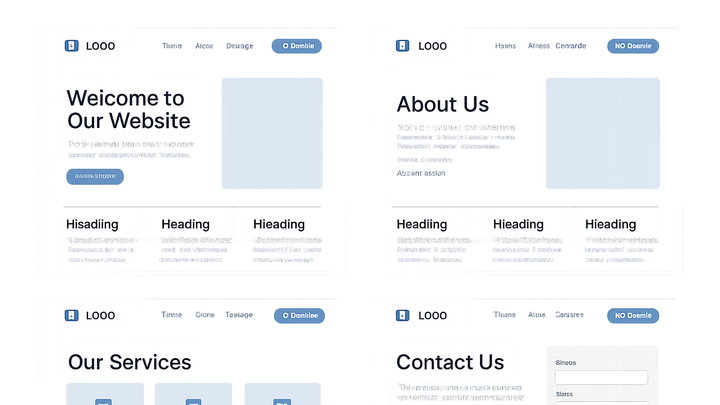Published on 2025-06-29T21:44:57Z
What is Design Consistency? Examples and Best Practices
Design Consistency is the practice of applying uniform visual and interactive elements across all pages and touchpoints of a website.
It encompasses consistent color palettes, typography, iconography, spacing, and component behaviors, aligning them with your brand guidelines.
In the realm of Conversion Rate Optimization (CRO), consistent design helps reduce friction at critical conversion points by making user journeys predictable and intuitive.
From a User Experience (UX) perspective, it lowers cognitive load, fosters trust, and accelerates task completion.
In terms of SEO, cohesive site architecture and improved engagement metrics—such as lower bounce rates and longer session durations—signal quality to search engines.
Tools like Prevue.me can automate the detection of design inconsistencies, delivering prioritized, actionable critiques to elevate your CRO, UX, SEO, and accessibility performance.
Design consistency
Uniform design across pages boosts usability, brand trust, and conversions by reducing cognitive load with consistent UI elements.
Why Design Consistency Matters
Design consistency ensures that users encounter familiar interface elements as they navigate your site. This reduces cognitive load, builds trust, and supports higher conversion rates. It’s foundational for brand recognition and can directly impact SEO signals like bounce rate. Tools like prevue.me can surface inconsistencies that might undermine user confidence or hinder conversions.
-
Enhanced usability
When design elements are predictable, users can navigate intuitively without relearning UI patterns on each page.
- Navigation menus:
Consistent placement and styling of menus help users find information quickly.
- Button styles:
Uniform button shapes, colors, and hover states guide users through calls to action.
- Navigation menus:
-
Brand trust and recognition
A cohesive visual identity reinforces brand credibility and keeps your message memorable.
- Color palette:
Using a unified color scheme strengthens brand presence.
- Typography:
Consistent fonts and heading hierarchies improve readability and brand association.
- Color palette:
-
Improved conversion rates
Clear and consistent UI patterns streamline the buyer’s journey, reducing friction at critical touchpoints.
- Form field layouts:
Standardized form designs lower user error and abandonment.
- Call-to-action placement:
Predictable CTA locations boost click-through rates.
- Form field layouts:
Key Elements of Design Consistency
These core elements ensure a unified look and feel across your website.
-
Visual elements
Consistent colors, icons, and imagery style ensure that pages feel part of the same ecosystem.
-
Interaction patterns
Uniform behaviors for buttons, links, and forms reduce surprise and increase user confidence.
-
Content structure
Maintaining the same layout grids, spacing, and hierarchy helps readers scan and digest content.
Implementing Design Consistency with Prevue.me
prevue.me can automate the detection of design inconsistencies across pages, offering prioritized, actionable insights to boost CRO, UX, SEO, and accessibility.
-
Automated visual audits
Scan multiple pages to flag mismatched colors, fonts, and element alignments.
-
Ux and accessibility recommendations
Receive prioritized critiques on interactive components, ensuring both consistency and compliance with accessibility standards.
-
Tracking and reporting
Monitor the resolution of inconsistencies over time and correlate with conversion metrics for continuous improvement.
Common Pitfalls to Avoid
Even experienced teams can stumble. Be aware of these traps when enforcing consistency.
-
Over-standardization
Rigid rules can stifle innovation and fail to adapt to different content needs.
-
Neglecting context
Applying the same patterns everywhere can harm usability if context demands a different approach.
-
Inconsistent updates
Changes in one part of the site that aren’t propagated can create fragmentation over time.
Measuring Consistency and Impact
Assessing the effectiveness of your consistency efforts ensures you’re investing in the right areas.
-
Heuristic audits
Manual or tool-assisted reviews of interface elements against a style guide.
-
User testing
Gather feedback to see if users find the site intuitive and coherent.
-
Analytics and a/b testing
Use metrics like bounce rate, session duration, and conversion rate to quantify the impact of consistency improvements.
